

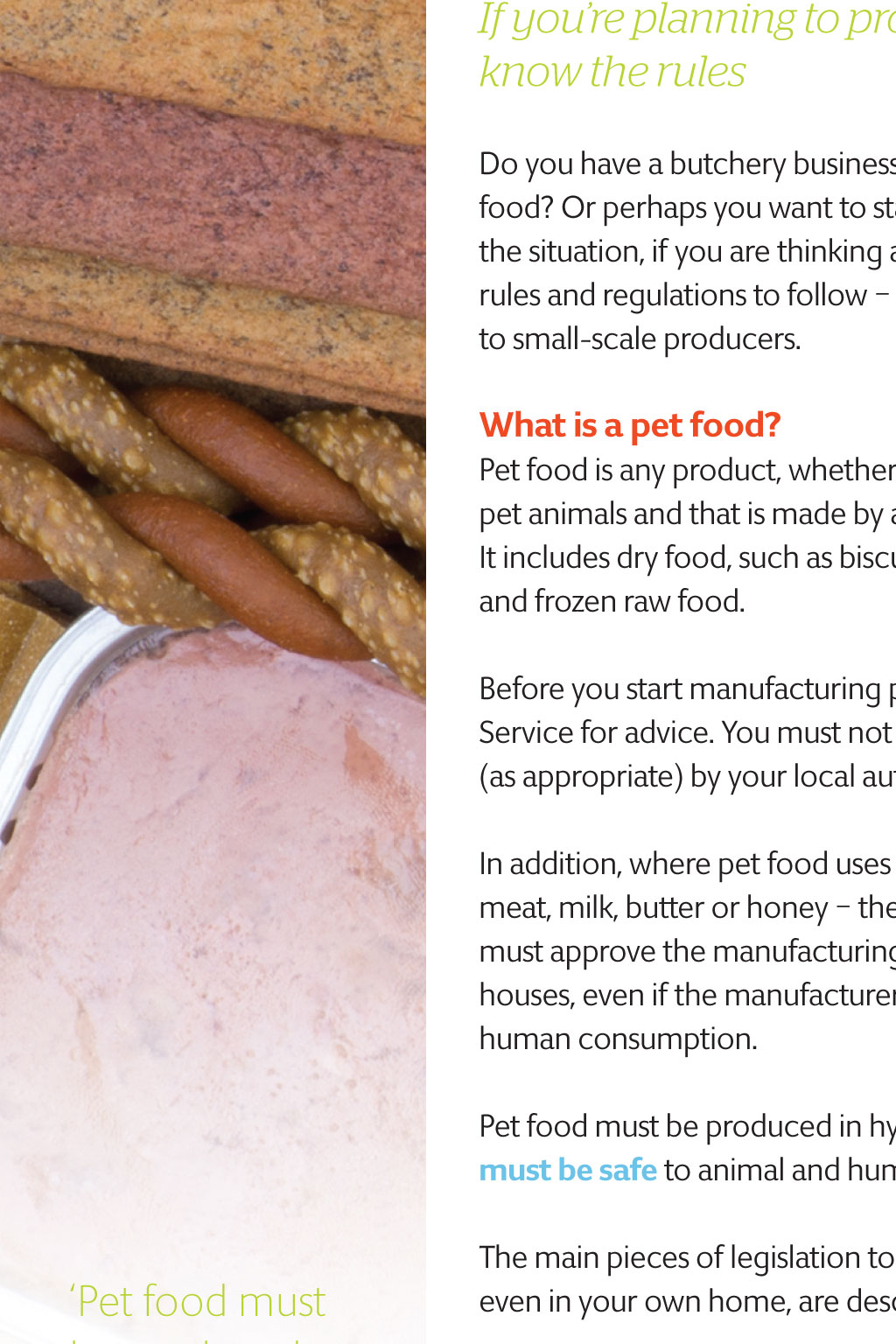
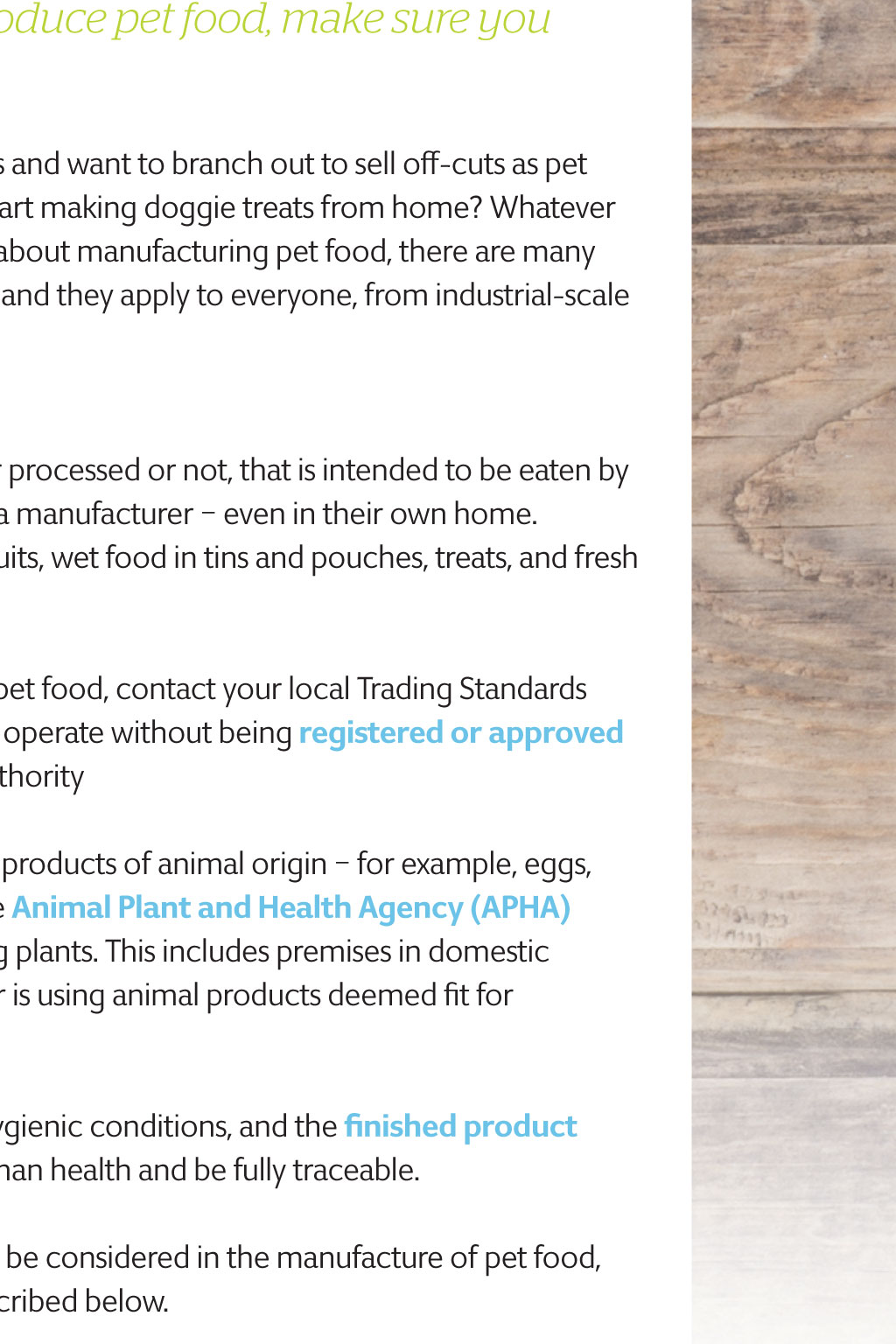
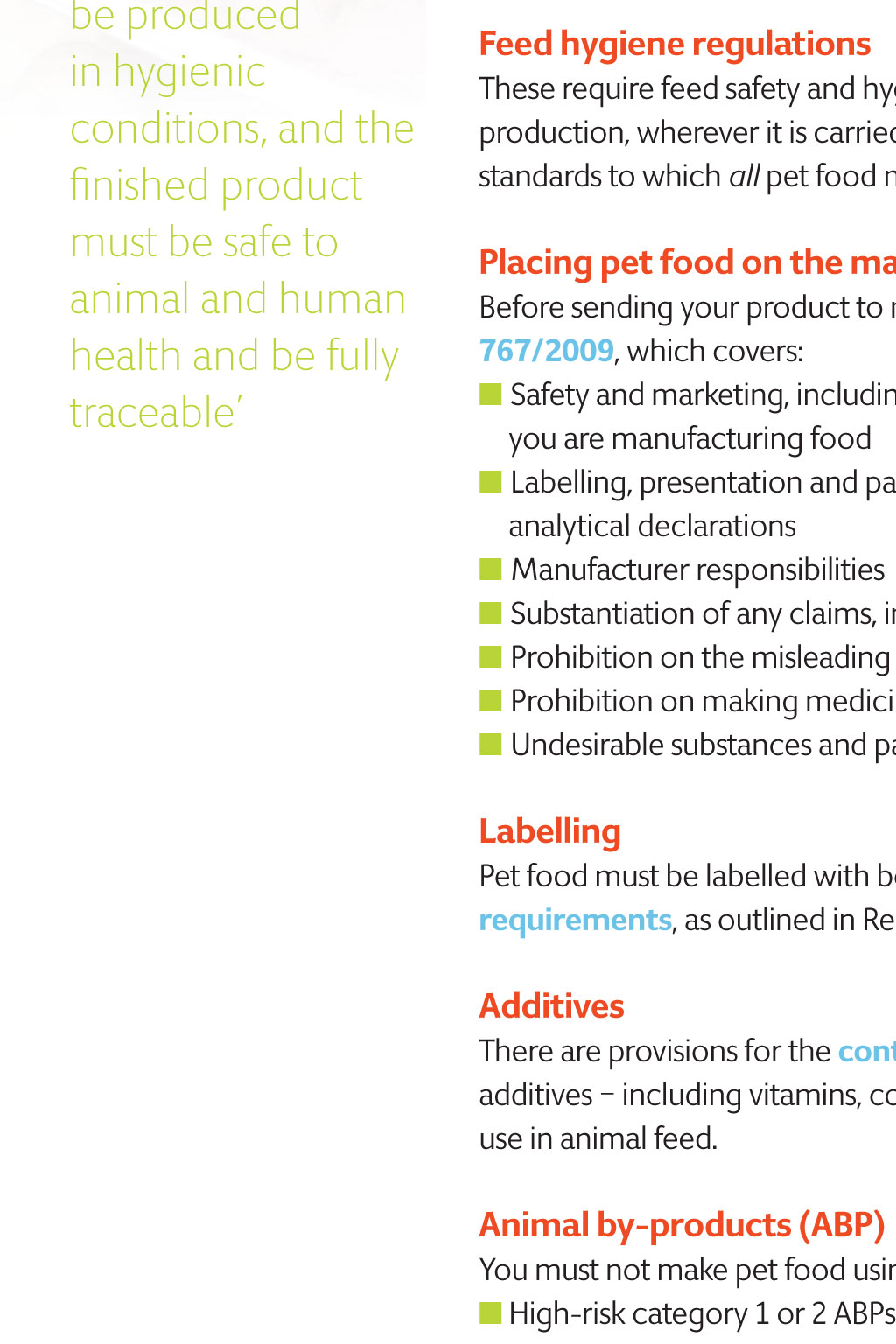
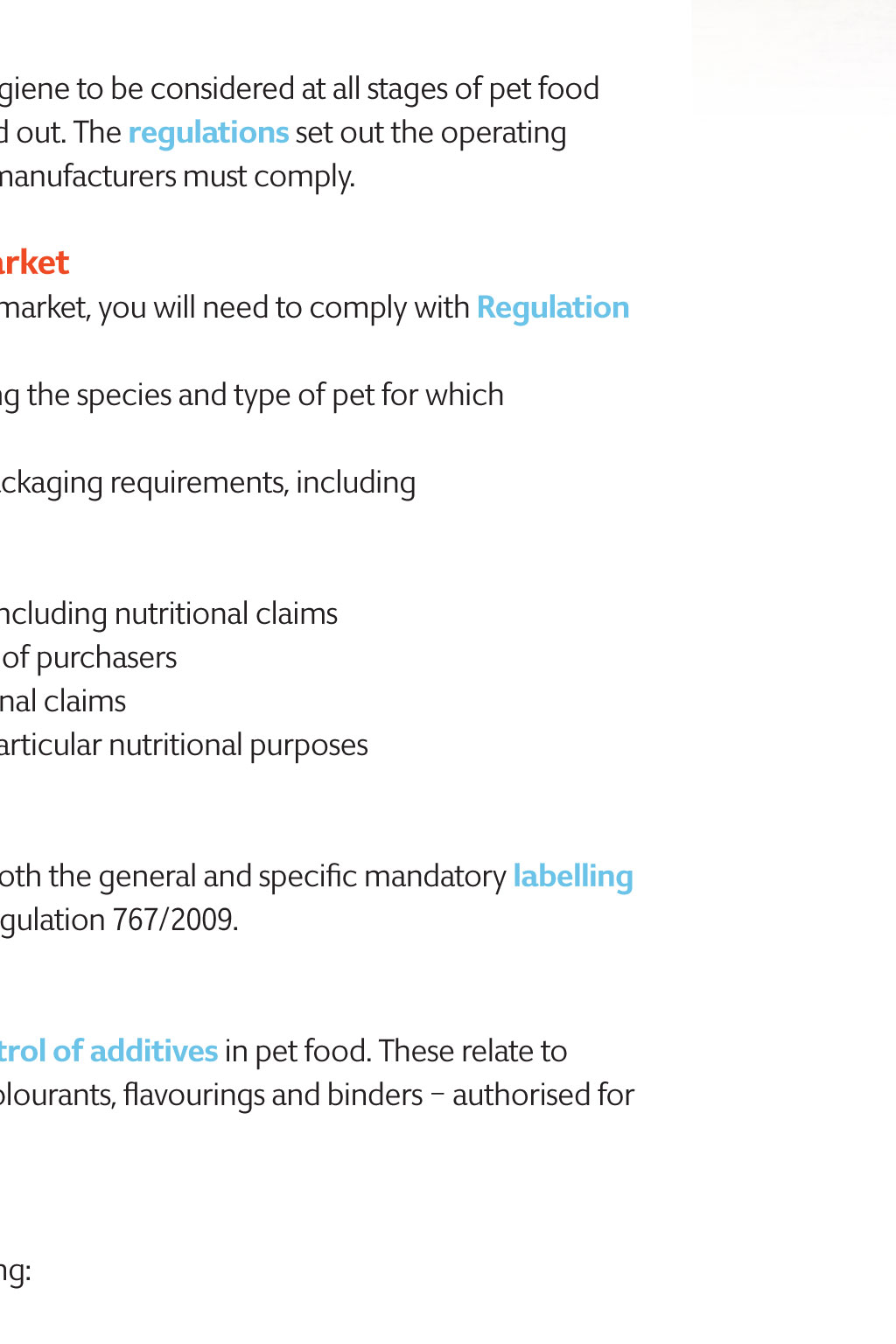
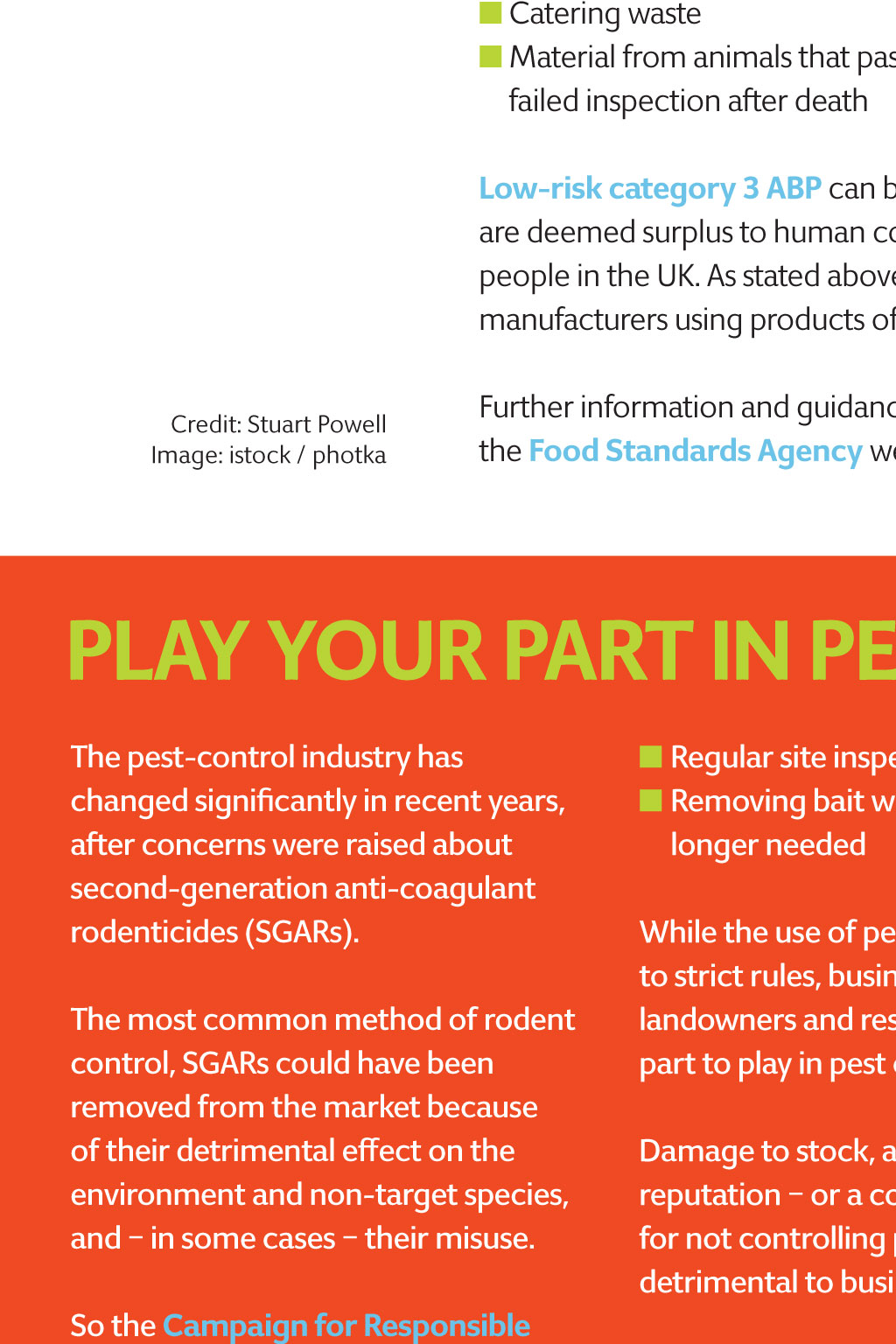
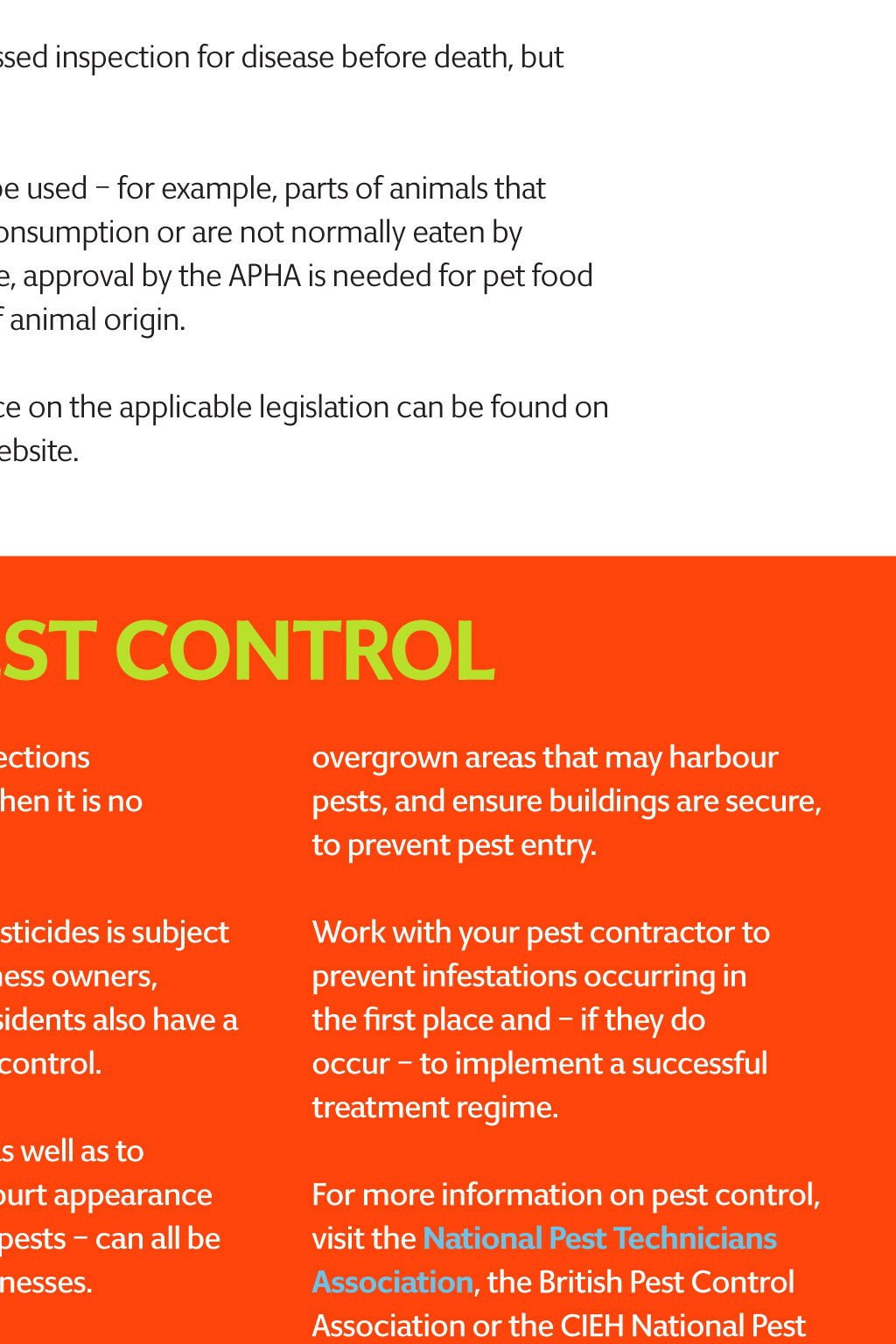
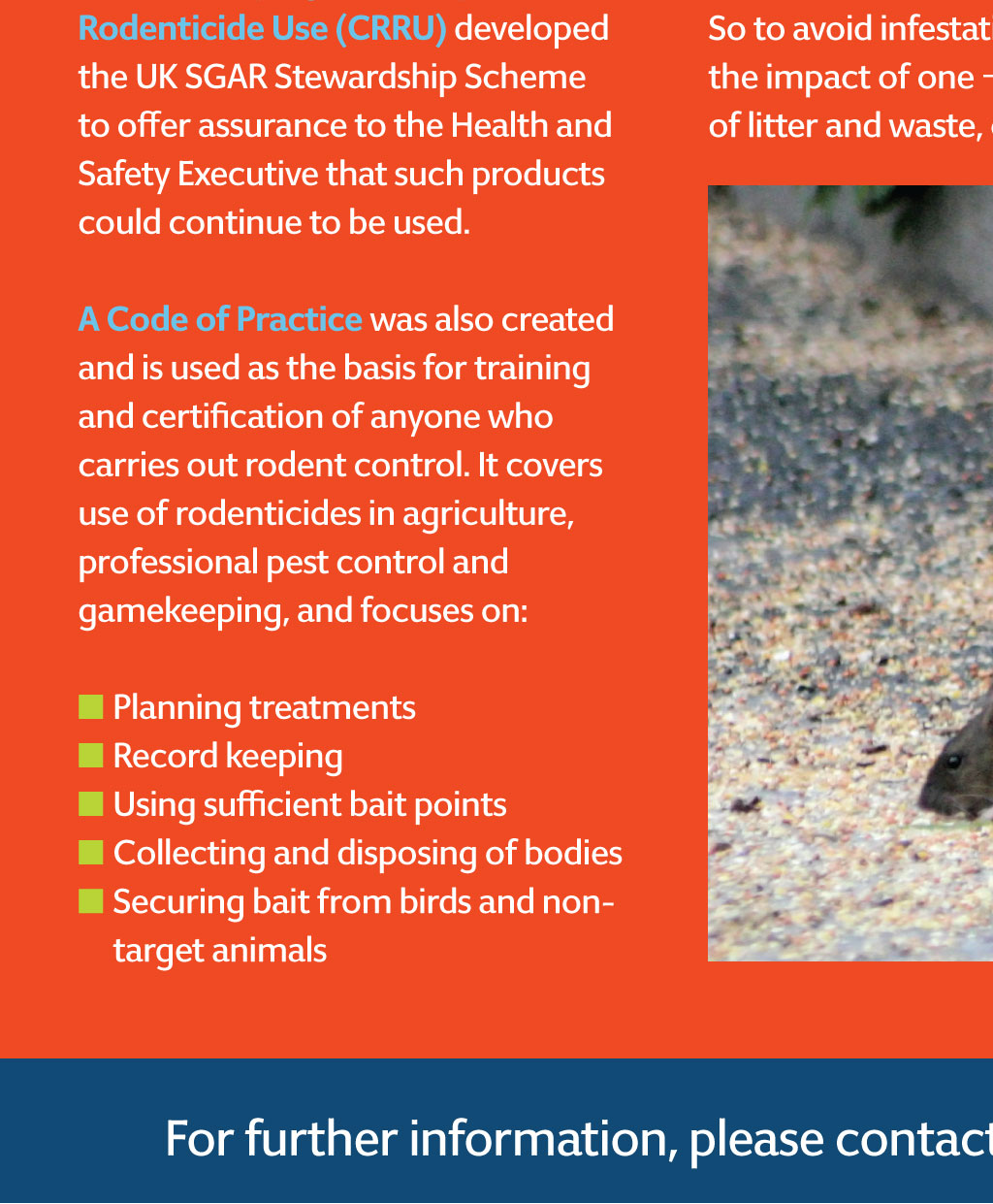
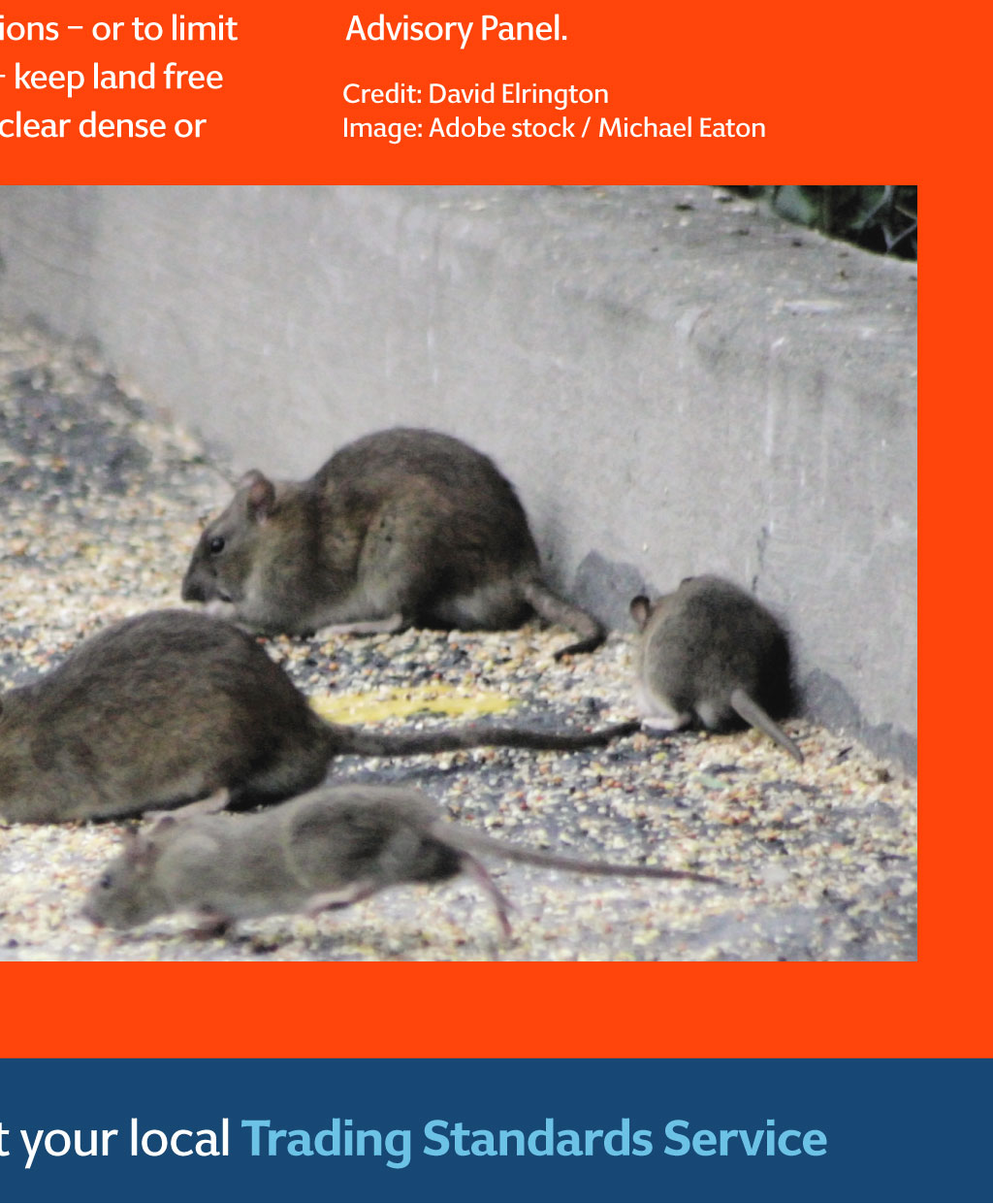










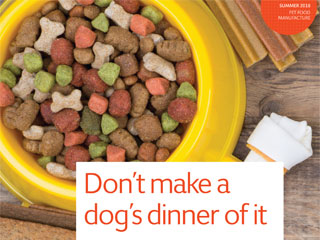
SUMMER 2018 Pet food manufacture Dont make a dogs dinner of it If youre planning to produce pet food, make sure you know the rules Do you have a butchery business and want to branch out to sell off-cuts as pet food? Or perhaps you want to start making doggie treats from home? Whatever the situation, if you are thinking about manufacturing pet food, there are many rules and regulations to follow and they apply to everyone, from industrial-scale to small-scale producers. What is a pet food? Pet food is any product, whether processed or not, that is intended to be eaten by pet animals and that is made by a manufacturer even in their own home. It includes dry food, such as biscuits, wet food in tins and pouches, treats, and fresh and frozen raw food. Before you start manufacturing pet food, contact your local Trading Standards Service for advice. You must not operate without being registered or approved (as appropriate) by your local authority In addition, where pet food uses products of animal origin for example, eggs, meat, milk, butter or honey the Animal Plant and Health Agency (APHA) must approve the manufacturing plants. This includes premises in domestic houses, even if the manufacturer is using animal products deemed fit for human consumption. Pet food must be produced in hygienic conditions, and the finished product must be safe to animal and human health and be fully traceable. Pet food must be produced in hygienic conditions, and the finished product must be safe to animal and human health and be fully traceable The main pieces of legislation to be considered in the manufacture of pet food, even in your own home, are described below. Feed hygiene regulations These require feed safety and hygiene to be considered at all stages of pet food production, wherever it is carried out. The regulations set out the operating standards to which all pet food manufacturers must comply. Placing pet food on the market Before sending your product to market, you will need to comply with Regulation 767/2009, which covers: n Safety and marketing, including the species and type of pet for which you are manufacturing food n Labelling, presentation and packaging requirements, including analytical declarations n Manufacturer responsibilities n Substantiation of any claims, including nutritional claims n Prohibition on the misleading of purchasers n Prohibition on making medicinal claims n Undesirable substances and particular nutritional purposes Labelling Pet food must be labelled with both the general and specific mandatory labelling requirements, as outlined in Regulation 767/2009. Additives There are provisions for the control of additives in pet food. These relate to additives including vitamins, colourants, flavourings and binders authorised for use in animal feed. Animal by-products (ABP) You must not make pet food using: n High-risk category 1 or 2 ABPs n Catering waste n Material from animals that passed inspection for disease before death, but failed inspection after death Low-risk category 3 ABP can be used for example, parts of animals that are deemed surplus to human consumption or are not normally eaten by people in the UK. As stated above, approval by the APHA is needed for pet food manufacturers using products of animal origin. Credit: Stuart Powell Image: istock / photka Further information and guidance on the applicable legislation can be found on the Food Standards Agency website. Play your part in pest control The pest-control industry has changed significantly in recent years, after concerns were raised about second-generation anti-coagulant rodenticides (SGARs). The most common method of rodent control, SGARs could have been removed from the market because of their detrimental effect on the environment and non-target species, and in some cases their misuse. So the Campaign for Responsible Rodenticide Use (CRRU) developed the UK SGAR Stewardship Scheme to offer assurance to the Health and Safety Executive that such products could continue to be used. nRegular site inspections nRemoving bait when it is no longer needed overgrown areas that may harbour pests, and ensure buildings are secure, to prevent pest entry. While the use of pesticides is subject to strict rules, business owners, landowners and residents also have a part to play in pest control. Work with your pest contractor to prevent infestations occurring in the first place and if they do occur to implement a successful treatment regime. Damage to stock, as well as to reputation or a court appearance for not controlling pests can all be detrimental to businesses. So to avoid infestations or to limit the impact of one keep land free of litter and waste, clear dense or For more information on pest control, visit the National Pest Technicians Association, the British Pest Control Association or the CIEH National Pest Advisory Panel. Credit: David Elrington Image: Adobe stock / Michael Eaton A Code of Practice was also created and is used as the basis for training and certification of anyone who carries out rodent control. It covers use of rodenticides in agriculture, professional pest control and gamekeeping, and focuses on: nPlanning treatments nRecord keeping nUsing sufficient bait points nCollecting and disposing of bodies nSecuring bait from birds and nontarget animals For further information, please contact your local Trading Standards Service